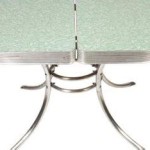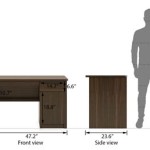How to Grow Your Own Vegetables in Pots
Growing your own vegetables in pots is a great way to get fresh, organic produce without taking up a lot of space. With a little planning and care, you can grow a variety of vegetables in pots, including tomatoes, peppers, cucumbers, beans, and herbs.
Here are some essential aspects to consider when growing vegetables in pots:
Choosing the Right Pots
The size and type of pot you choose will depend on the type of vegetables you want to grow. For most vegetables, a pot that is at least 12 inches deep and wide is a good starting point. The pot should also have drainage holes to prevent the roots from sitting in water.
Terracotta, plastic, and fabric pots are all suitable for growing vegetables in pots. Terracotta pots are porous, which allows excess water to evaporate, but they can also dry out quickly. Plastic pots are lightweight and durable, but they can get hot in the sun. Fabric pots are breathable and allow for good drainage, but they can be more difficult to move around.
Choosing the Right Soil
The soil you use in your pots is just as important as the pots themselves. A good potting mix should be well-draining and rich in organic matter. You can purchase a commercial potting mix or make your own by combining equal parts compost, peat moss, and perlite.
It is also important to fertilize your plants regularly. A balanced fertilizer, such as a 10-10-10 fertilizer, can be applied every few weeks.
Watering Your Plants
Vegetables in pots need to be watered regularly, especially during hot weather. The amount of water you need to give your plants will depend on the type of vegetable, the size of the pot, and the weather conditions.
A good rule of thumb is to water your plants deeply and then allow the soil to dry out slightly before watering again. Overwatering can lead to root rot, so it is important to avoid overwatering.
Sunlight
Most vegetables need at least 6 hours of sunlight per day to grow properly. If you are growing vegetables in pots, you will need to place them in a location where they will receive adequate sunlight.
If you do not have a lot of natural sunlight, you can supplement with artificial light. Fluorescent or LED grow lights can be used to provide your plants with the light they need to grow.
Pest and Disease Control
Vegetables in pots can be susceptible to pests and diseases, just like vegetables grown in the ground. It is important to inspect your plants regularly and treat any problems as soon as possible.
There are a number of organic and non-organic methods for controlling pests and diseases. You can find more information on pest and disease control in your local gardening center or online.
Harvesting Your Vegetables
When your vegetables are ripe, you can harvest them and enjoy the fruits of your labor. Most vegetables are ready to harvest when they are full-sized and have a deep color.
To harvest your vegetables, simply cut them off the plant with a sharp knife. Be careful not to damage the plant or the vegetables.
Growing vegetables in pots is a rewarding experience that can provide you with fresh, organic produce all season long. By following these essential aspects, you can grow a successful vegetable garden in pots.

Grow Your Own Vegetables In Pots And Containers Ebook Paul Peacock 9781472139184 Bol
Grow Your Own Vegetables In Pots 35 Ideas For Growing Fruits And Herbs Containers Ebook Deborah Schneebeli Morrell Isbn 9781908862372 Storytel

Grow Your Own Vegetables Where And How To Start For Beginners

Indoor Food Gardens 6 Tips For Diy Home Harvesting

Grow Your Own Vegetables Good Greens In Containers And Small Spaces
What Are The Best Ways To Grow Vegetables In Pots At Home Quora

How To Grow Your Own Vegetables Using Leftover Seeds From The Fridge Telegraph

Grow Your Own Vegetables In Junk Containers
Creating A Container Garden For Vegetables Herbs And Flowers Mast General

Easy Grow Your Own Vegetables For Pots And Containers Sjgardenadvice Co








